Back to Part 4!
Road Trip 2010, Part 5
Hot Springs
Yellowstone is home to the largest concentration of hydrothermal features on the entire planet.
Hot springs, geysers, mudpots, fumaroles, and everything in between. In some areas of the park, it seemed like
every time we'd go over a hill or around a curve, there would be another hillside covered with steaming holes.

Here's the warning sign that's in front of most of the hot spring and geyser areas. I like the illustration of
the kid that's wandered off the path and broken through the thin ground, falling into a concealed hot spring
where he will be boiled alive, while his sister points helplessly, screaming in horror as their oblivious parent
wanders off.
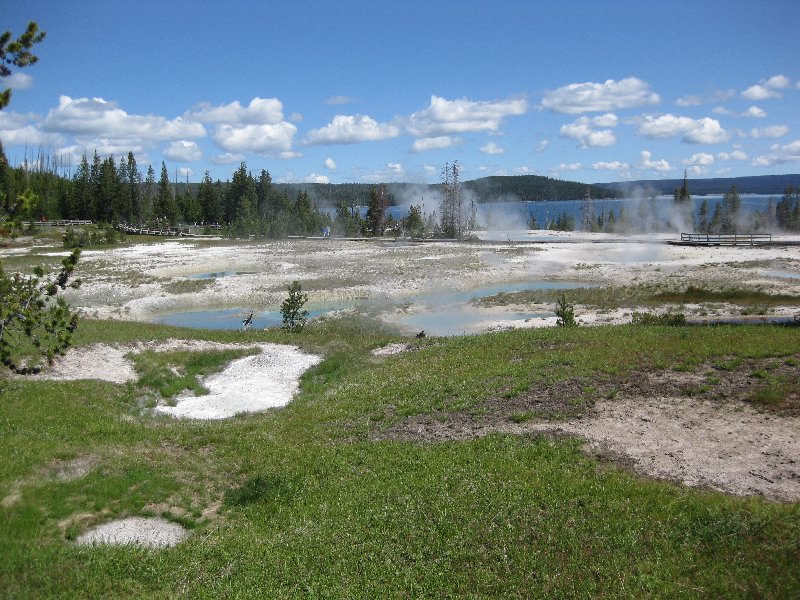
This is part of the West Thumb Geyser Basin.

I didn't make a note of the name of this hot spring. The bubbles are because it's boiling hot.
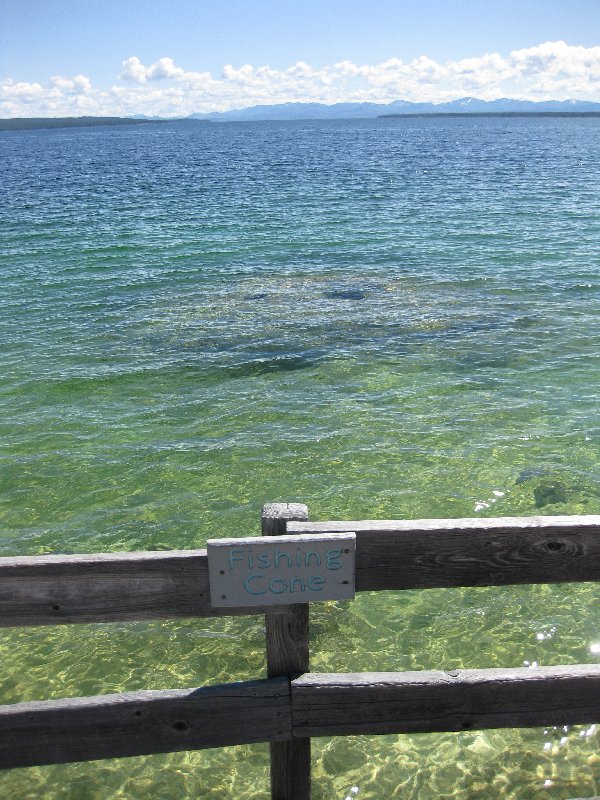
This is Fishing Cone. It normally projects above the surface of the lake, but the water level is about 5 feet higher
than normal because of springtime snowmelt. Why is it called Fishing Cone, you ask? Back in the day, when the park
was first opened, people would stand on the cone and cast their fishing lines into the lake. When they'd
hook a fish, they would lift it from the water, and (while it was still on the line) dip it into Fishing
Cone for a few minutes to cook it. Mmm, fresh fish!
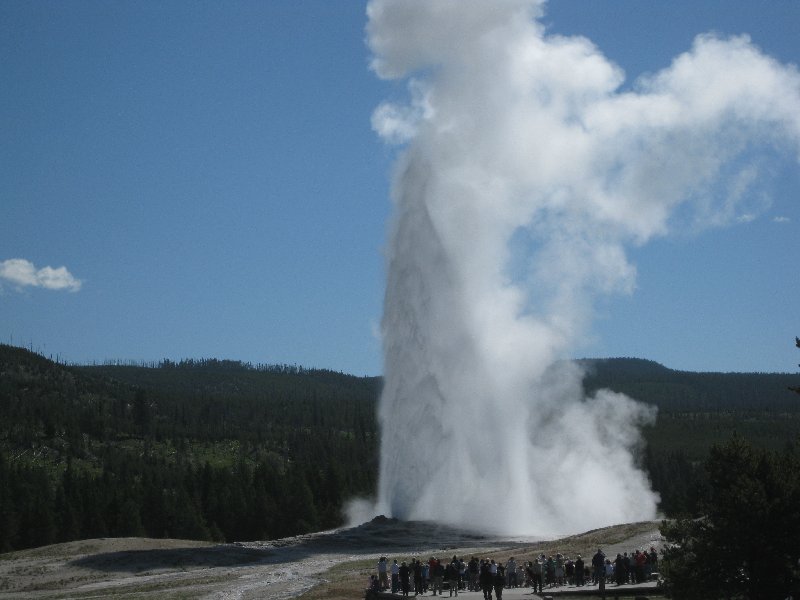
And of course, no visit to the park would be complete without a stop at Old Faithful.
This is the second eruption we saw. The first time, we went to the regular viewing area, where all those people
in the foreground are. It was crowded. The girls wanted to see it again, so the next morning we went to the Old
Faithful Inn for breakfast. As we arrived, we could see the plume of steam erupting over the trees, which meant
we had just missed the eruption. Fortunately, they occur roughly every 90 minutes. We ate, then wandered to the
second floor balcony in time to catch the next eruption. It was a much nicer vantage point.
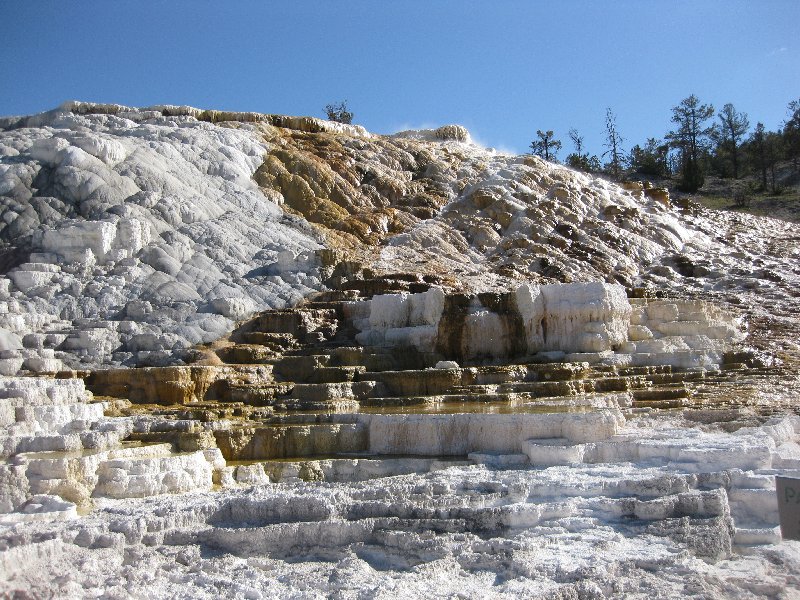
Terraces at Mammoth Hot Springs. These are interesting. The hot water dissolves calcium carbonate underground,
and it's deposited on the surface. But it's deposited where the water is moving the fastest. So you get these
little pools, each surrounded by a thin wall. As the water flows over the thin wall, it deposits more calcium
carbonate, building the wall up even more.
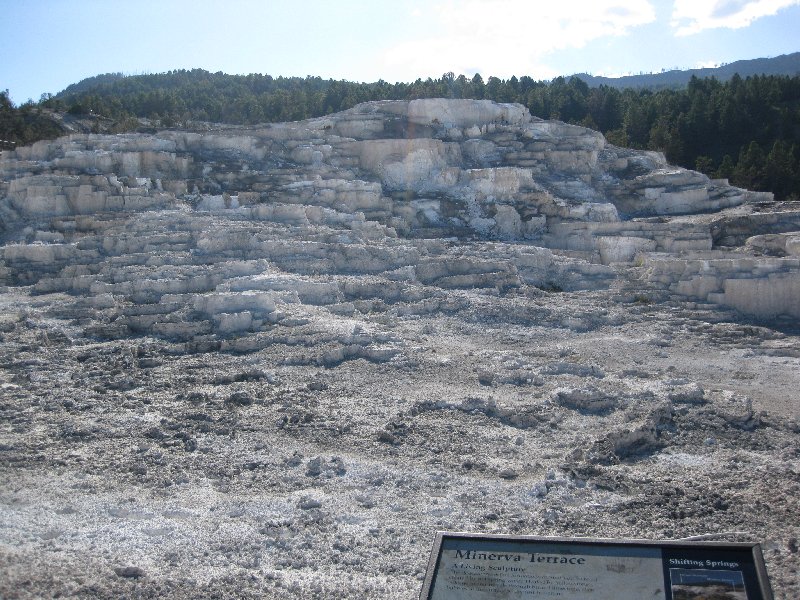
Minerva Terrace, Mammoth Hot Springs. I visited Yellowstone back in 1976, when I was in high school.
I remember this being active and colored red-yellow-orange-white, like the ones in the last picture.
The sign says that it sometimes dries out, like now, and sometimes flows freely.
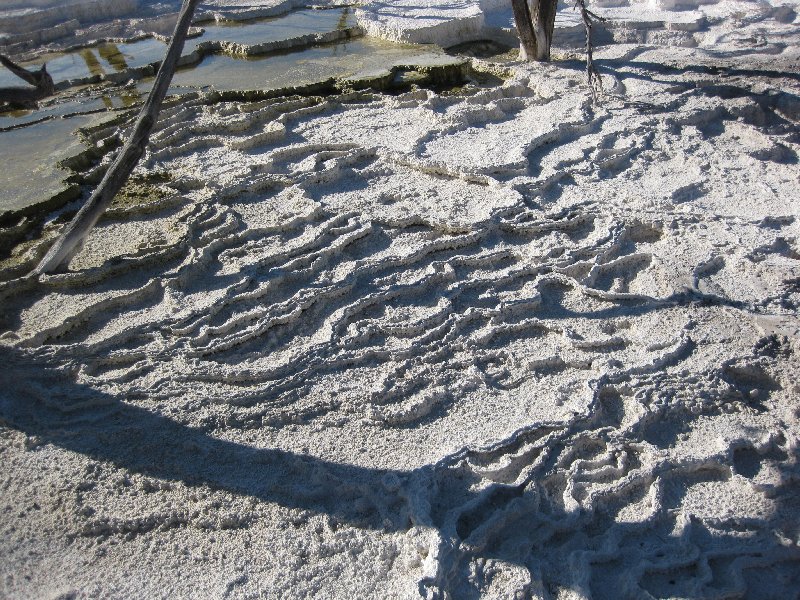
You can see those thin little walls I was talking about here.
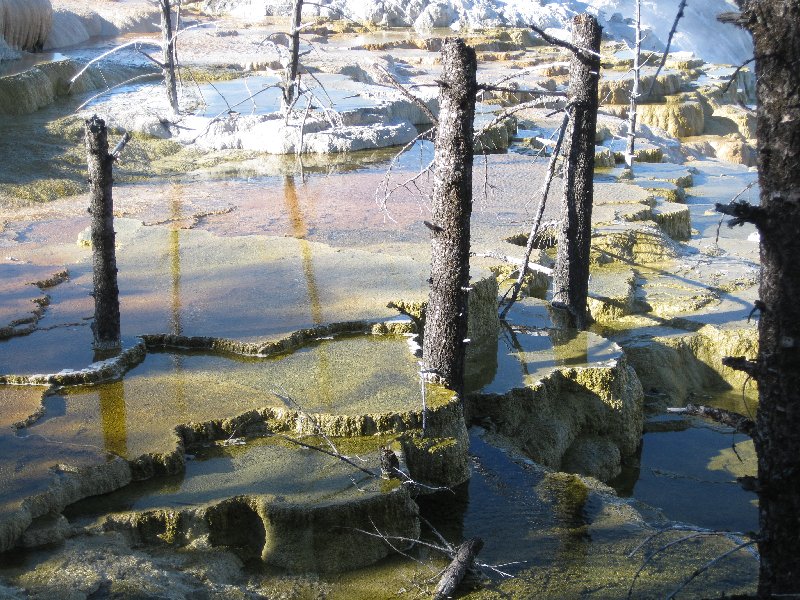
Here, the mineral deposits have built up around and killed these trees.
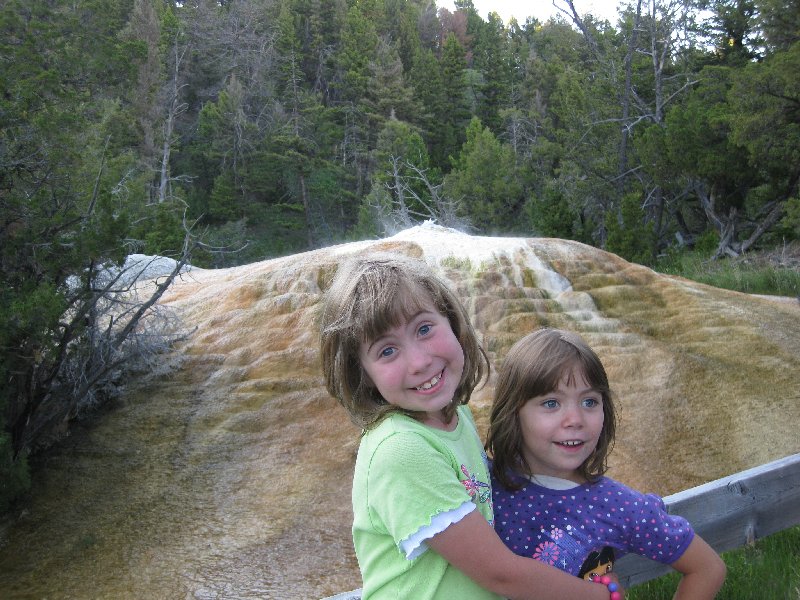
Orange Spring Mound. Would you like some ham with that? I couldn't get them to just smile normally. Every non-candid
picture I took has some sort of pose in it...
On to Part 6!









